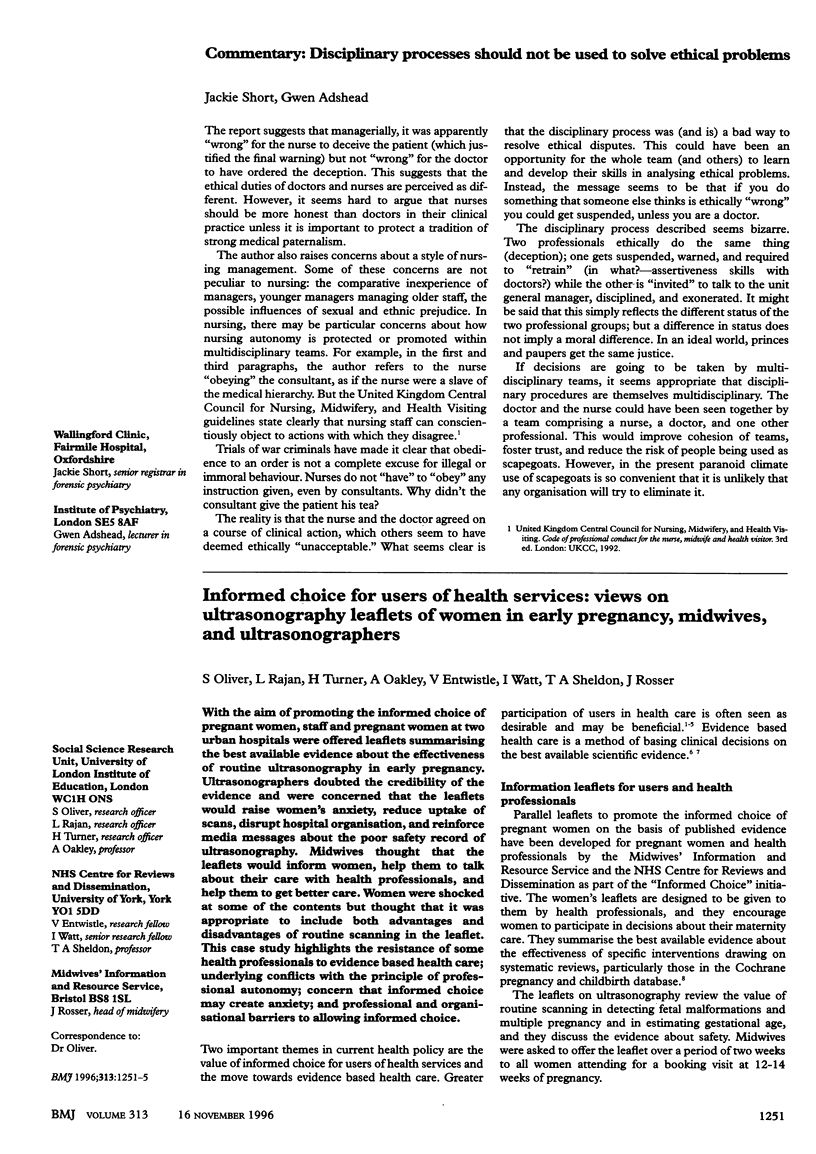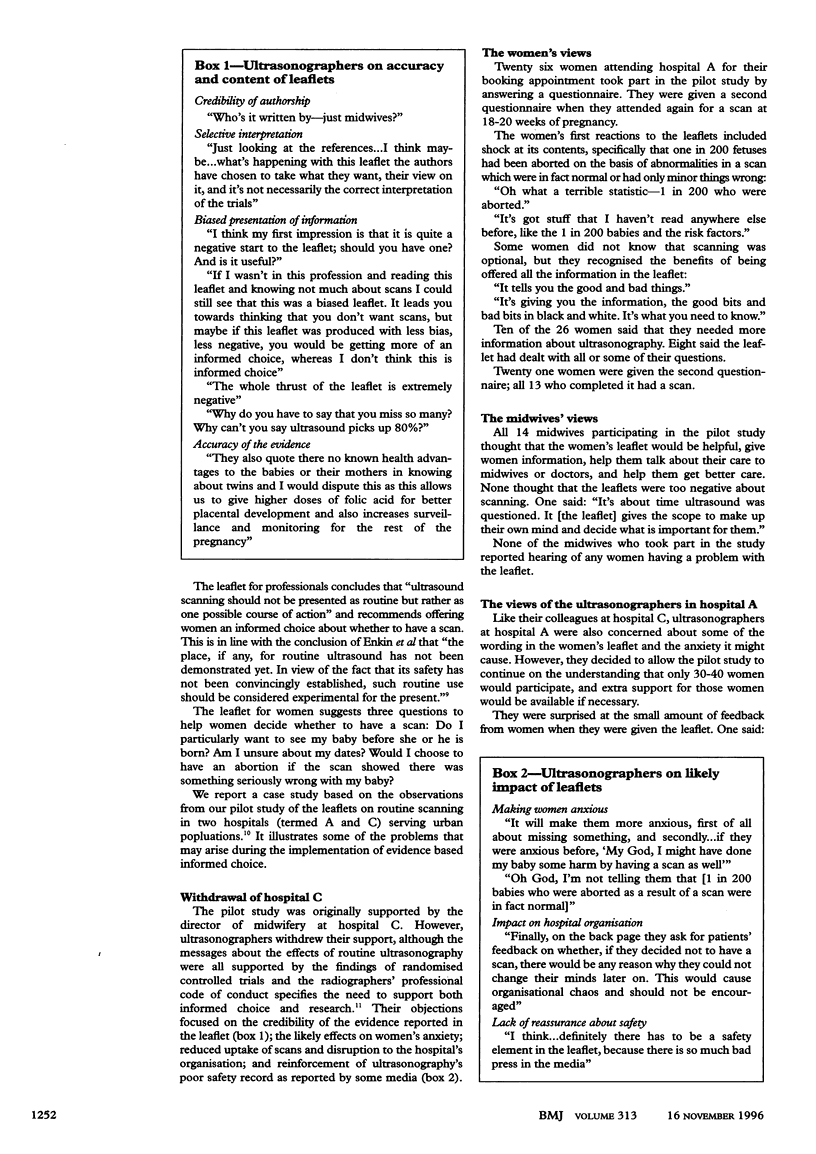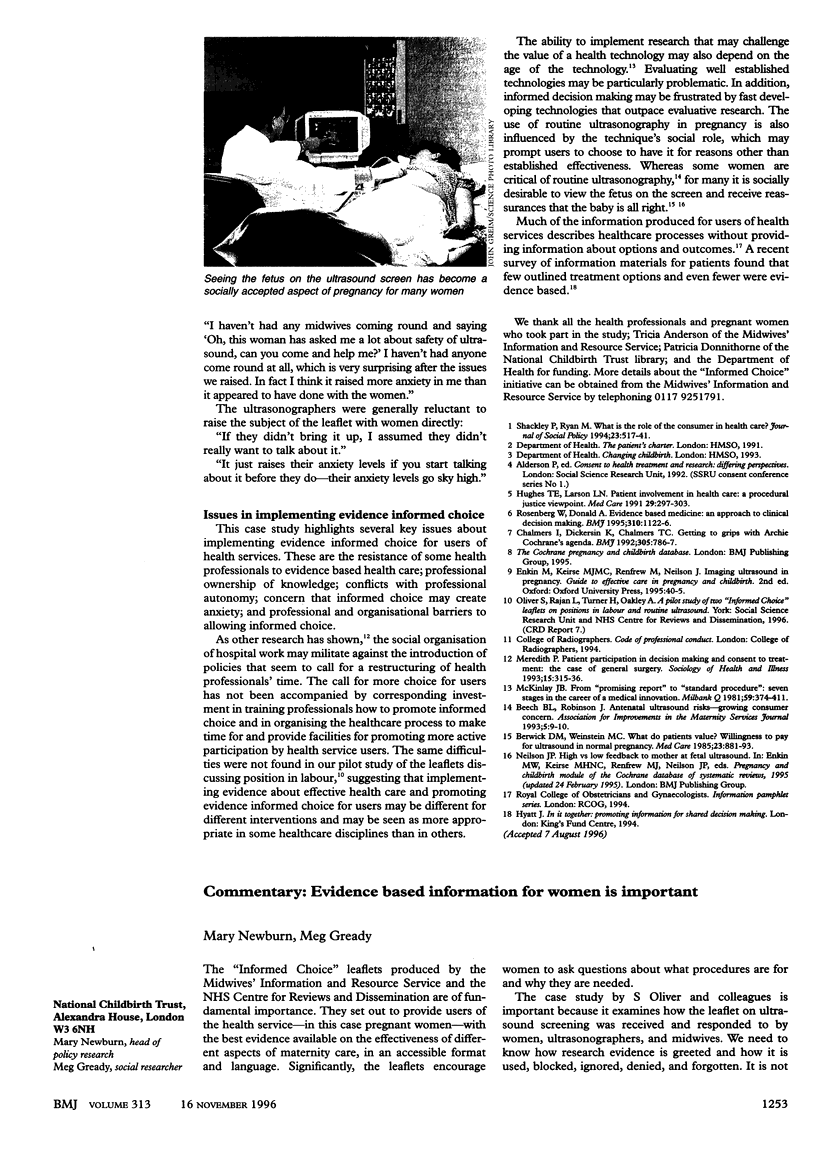Abstract
With the aim of promoting the informed choice of pregnant women, staff and pregnant women at two urban hospitals were offered leaflets summarising the best available evidence about the effectiveness of routine ultrasonography in early pregnancy. Ultrasonographers doubted the credibility of the evidence and were concerned that the leaflets would raise women's anxiety, reduce uptake of scans, disrupt hospital organisation, and reinforce media messages about the poor safety record of ultrasonography. Midwives thought that the leaflets would inform women, help them to talk about their care with health professionals, and help them to get better care. Women were shocked at some of the contents but thought that it was appropriate to include both advantages and disadvantages of routine scanning in the leaflet. This case study highlights the resistance of some health professionals to evidence based health care; underlying conflicts with the principle of professional autonomy; concern that informed choice may create anxiety; and professional and organisational barriers to allowing informed choice.
Full text
PDF


Images in this article
Selected References
These references are in PubMed. This may not be the complete list of references from this article.
- Berwick D. M., Weinstein M. C. What do patients value? Willingness to pay for ultrasound in normal pregnancy. Med Care. 1985 Jul;23(7):881–893. [PubMed] [Google Scholar]
- Chalmers I., Dickersin K., Chalmers T. C. Getting to grips with Archie Cochrane's agenda. BMJ. 1992 Oct 3;305(6857):786–788. doi: 10.1136/bmj.305.6857.786. [DOI] [PMC free article] [PubMed] [Google Scholar]
- Hughes T. E., Larson L. N. Patient involvement in health care. A procedural justice viewpoint. Med Care. 1991 Mar;29(3):297–303. doi: 10.1097/00005650-199103000-00011. [DOI] [PubMed] [Google Scholar]
- McKinlay J. B. From "promising report" to "standard procedure": seven stages in the career of a medical innovation. Milbank Mem Fund Q Health Soc. 1981 Summer;59(3):374–411. [PubMed] [Google Scholar]
- Meredith Philip. Patient participation in decision-making and consent to treatment: the case of general surgery. Sociol Health Illn. 1993 Jun;15(3):315–336. doi: 10.1111/1467-9566.ep10490539. [DOI] [PubMed] [Google Scholar]
- Rosenberg W., Donald A. Evidence based medicine: an approach to clinical problem-solving. BMJ. 1995 Apr 29;310(6987):1122–1126. doi: 10.1136/bmj.310.6987.1122. [DOI] [PMC free article] [PubMed] [Google Scholar]



